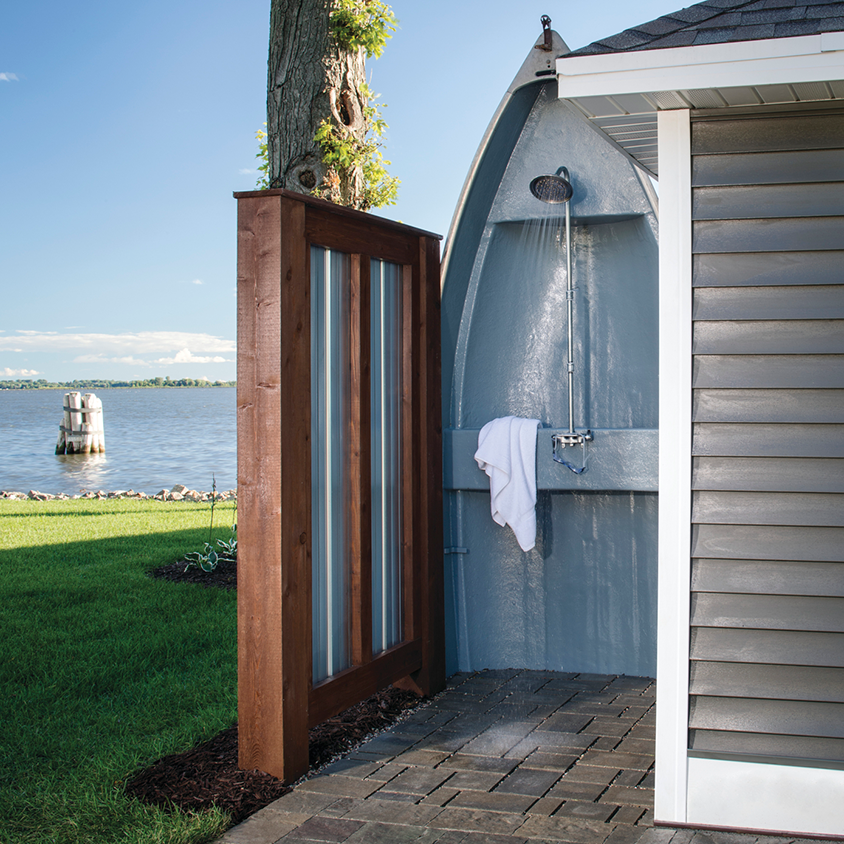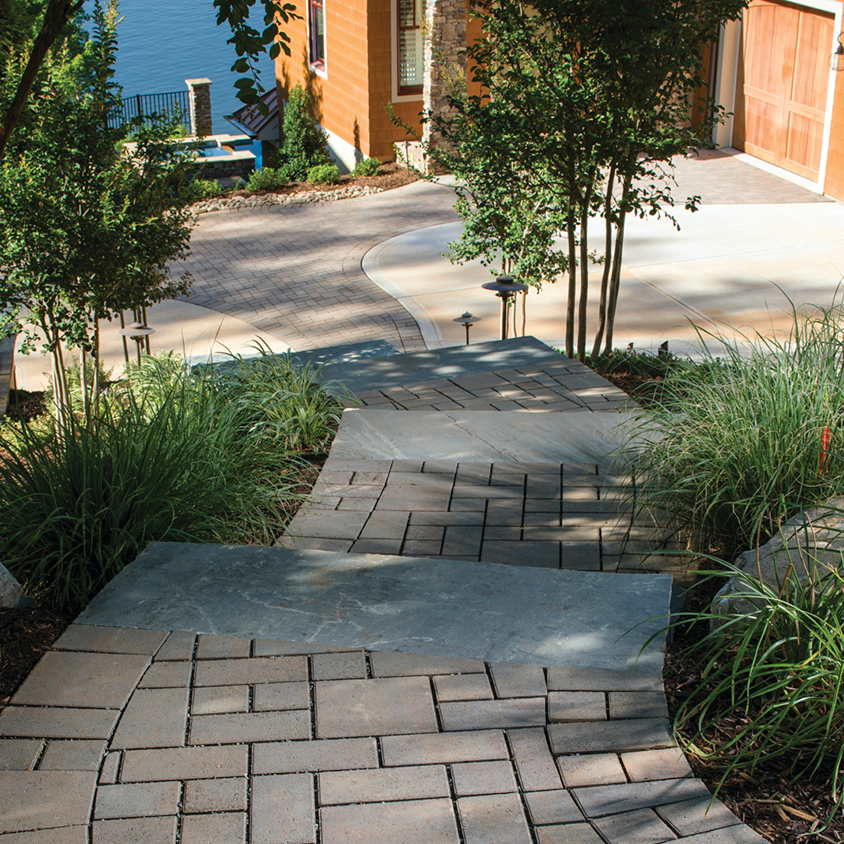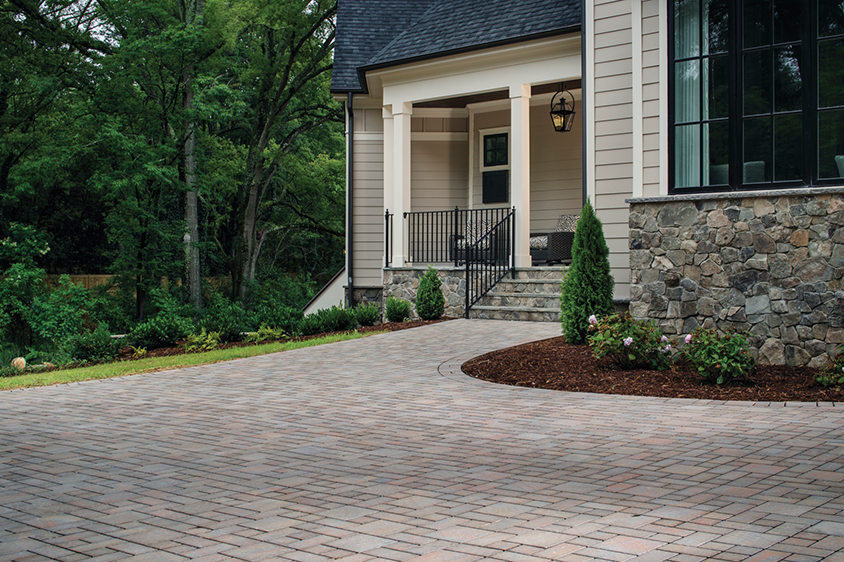The visionary architect Buckminster Fuller once said “Ninety-nine percent of who you are is invisible and untouchable.” Fuller understood that whether it’s a person or a building, most of what you see is connected to some deeper core residing beneath the surface. A huge proponent of environmentalism, he also understood that while design needs to be aesthetically pleasing, it should also be ecologically sustainable. Today, we will look at four creative uses for permeable pavers that all provide visually appealing materials for the green-minded homeowner. And while the pavers themselves create a classic look, that invisible ninety-nine percent is what makes this system such a practical and eco-friendly hardscape solution.
Permeable pavers are just the face of a simple system for dealing with stormwater runoff, erosion, drainage, and watershed pollution. The pavers are installed over a base of aggregates made up of small stones and gravel. Water penetrates the surface by filtering through the pavement and percolating down through the base aggregates. Belgard’s eco-friendly pavers: Aqualine™, Eco Dublin® and Turfstone™, can all contribute to LEED® accreditation (Leadership in Energy and Environmental Design), which are highly sought after in both municipal and residential projects.

Driveways:
Good design should always find that beautiful symbiosis where form and function intersect. What could possibly improve upon this union? Incorporating ecologically sustainable systems into that design. Traditional driveways present several problems when it comes to water runoff and “heat islands.” Impervious driveways made of asphalt collect pollutants like car fluids, fertilizers, animal waste, and debris, which are then washed into watersheds by stormwater runoff. Additionally, the underlying soil dries out depriving plant roots of nutrients and becoming more prone to erosion.
Permeable pavers offer a solution that is functional, beautiful and avoids the pitfalls of traditional driveways. Each paver is separated by sand or other aggregates to allow rainwater to seep through into the underlying soil. These aggregates filter out pollutants while reviving the ground’s water supply. Because they don’t allow water to pool up, pervious pavers are a safer option for inclement weather. Snow and rain water can pass through the surface, making them less slick, and heating units can even be installed beneath the pavers for particularly icy conditions.

Outdoor Shower:
Whether you spend your days bobbing in the surf of the ocean or splashing in a freshwater lake, an outdoor shower is an excellent addition to a backyard space. While permeable pavers make an excellent option for pool decks, they are even more perfect for pool deck accessories like outdoor showers. Rather than installing a drain, permeable pavers create a consistent and appealing surface for the shower, while allowing runoff to filter down into the underlying soil.
For extra flair, you can surround your shower with garden beds. Because your water will drain straight into the underlying soil rather than a sewage system, the foliage boarding your shower will enjoy the revitalizing ground water.
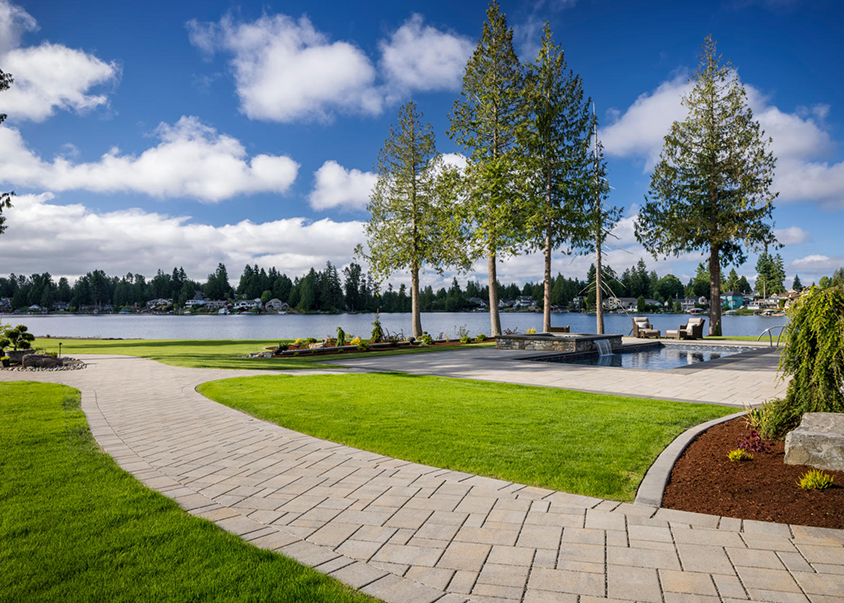
Walkways:
While we tend to focus on the main areas of any outdoor space, the places in-between can be just as important. The walkways that connect patios and outdoor rooms act as transitory places where you don’t often spend time sitting or standing in one place, but they can take you right through the landscape you’ve so carefully manicured. Permeable pavers make an excellent material for walkways. Rather than adding to runoff, a pervious walkway will allow rainwater to seep into the soil and revitalize the surrounding foliage.
The Aqualine pavers have great ADA potential to make your walkways accessible, that way anyone can enjoy your outdoor oasis. Eco Dublin has a stone-cut look that can add to rustic and modern aesthetics alike. Finally, Turfstone allows your walkway to blend right into the landscape, giving a natural but clean look as grass emerges through the lattice design.
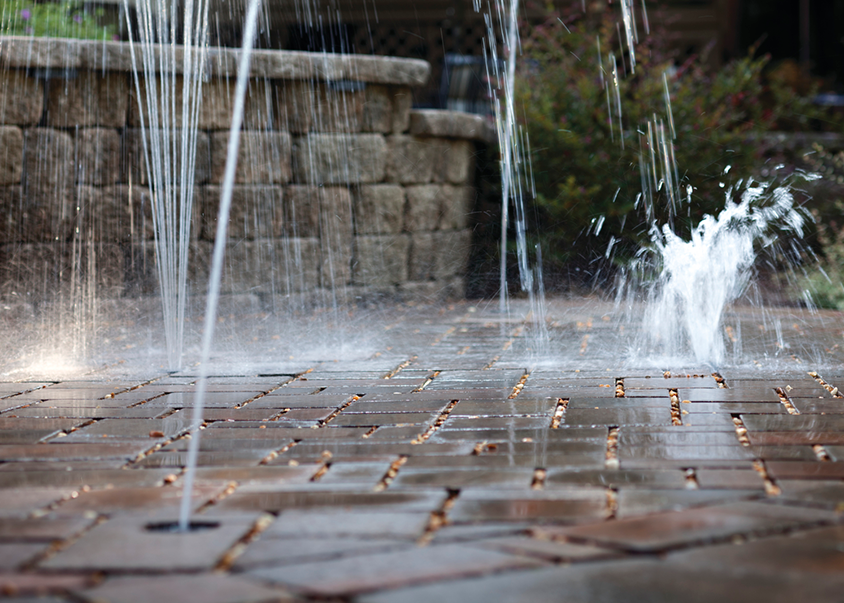
Splash Pad and Water Features:
There was a time when jumping through a sprinkler in the backyard was the best way for a child to find some relief during an oppressive summer day. Today, there are more efficient, frugal, and ecologically sound solutions for beating the heat. All it takes is some creativity, engineering and permeable pavers to construct the perfect splash pad for those sweltering summer afternoons. The permeable pavers allow rainwater to filter down through the aggregates where it is stored in a subterranean cistern. The water can then be pumped out through irrigation back to the surface to create the desired running-through-the-sprinklers effect. It will then run back down and cycle through again. This model not only reduces water consumption but offers an excellent solution for rainwater runoff.
Splash pads are just one of the many water features that work fantastically with permeable pavers. Whether you want a fountain, pondless waterfall or water wall, pervious pavers will convert your beautiful water feature into a sustainable centerpiece for your outdoor space. To supercharge your eco-friendly hardscape, solar energy is a great way to power the water circulation. Solar not only saves money and reduces emissions, it’s far easier to install into a preexisting structure because you don’t have to connect to a central power source.
Whatever your project, permeable pavers are an excellent choice when you want to save money, conserve water and reduce stormwater runoff. These ideas are just the tip of the iceberg when it comes to applications for pervious pavers, and hopefully they help inspire your next outdoor undertaking. If you’re looking for more information on Aqualine, Eco Dublin or Turfstone check out our page on permeable pavers.
